Forget squats — these 4 glute bridge variations will build your backend
Try these exercises for stronger, shapelier glutes
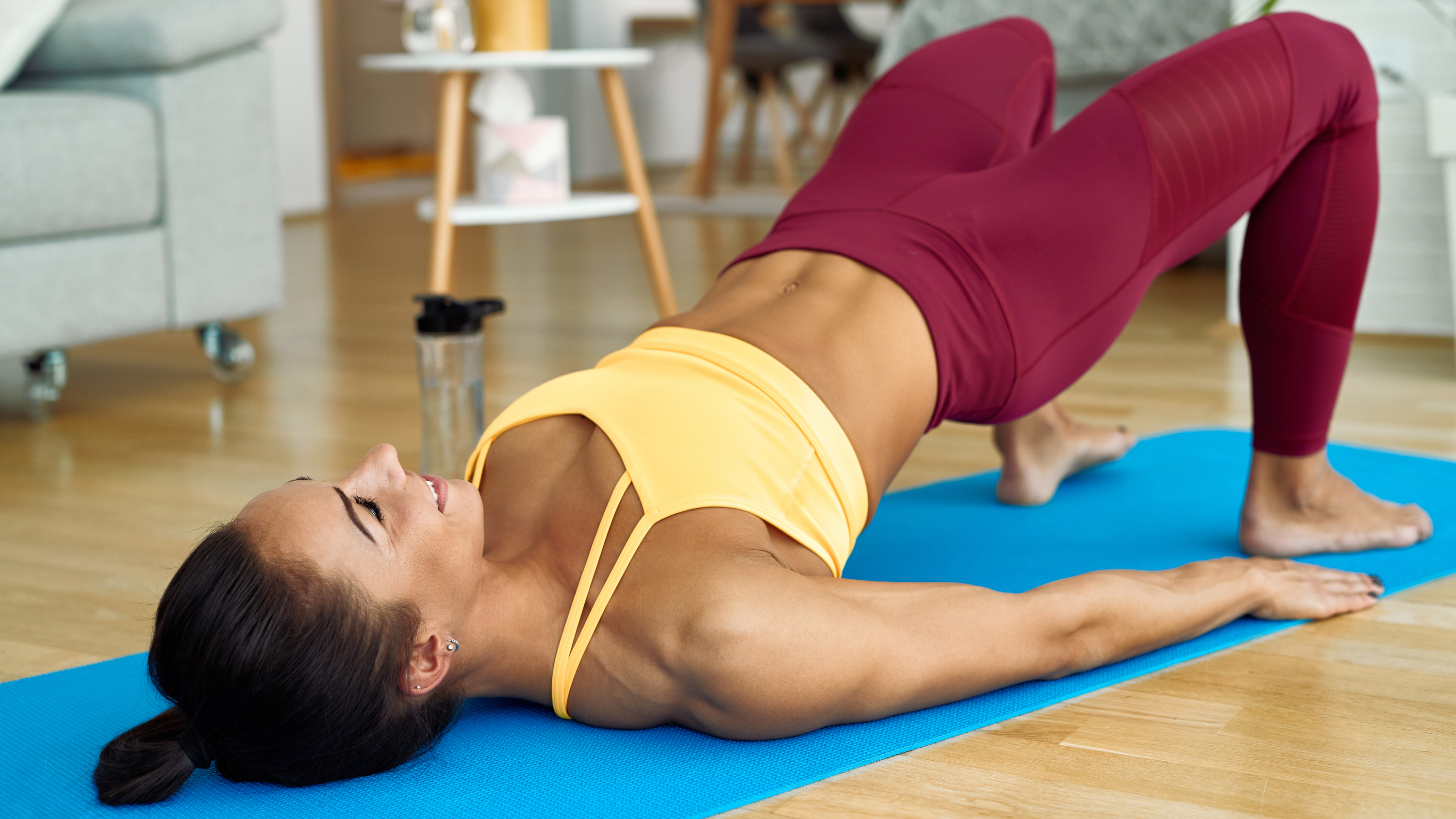
Glute bridges are one of my favorite exercises for strengthening not only your glutes, but also your hamstrings and core. They’re accessible for beginners, don’t require any equipment to do (although I recommend rolling out a yoga mat for cushioning), and won’t aggravate common problem spots like your knees and lower back.
Standard glute bridges can get easy relatively quickly, though. Progressive overload is key in building and maintaining strength, so you may need to add additional weight or reps to your glute bridges once they fail to fatigue you in the same way.
However, you can also experiment with glute bridge variations to add some variety into your lower body work. These four glute bridge options target the glutes in different ways, while also recruiting additional muscle groups into the movement.
What are the 4 glute bridge variations?
If you’re new to working out, consider meeting with a certified personal trainer to ensure that you’re performing the exercise correctly. Glute bridges aren’t hard to master, but specific adjustments from a pro can make a world of difference. You’ll want to be comfortable with the standard form before you attempt these variations.
In addition to a yoga mat, grab a weight bench or chair to perform these exercises.
Start with 1-2 sets of each exercise with 10-12 reps per set, eventually working your way up to 2-3 sets of 15-20 reps. You may also experiment with adding dumbbells or resistance bands to these moves for an extra challenge.
The variations are:
Get instant access to breaking news, the hottest reviews, great deals and helpful tips.
1. Single-leg glute bridge
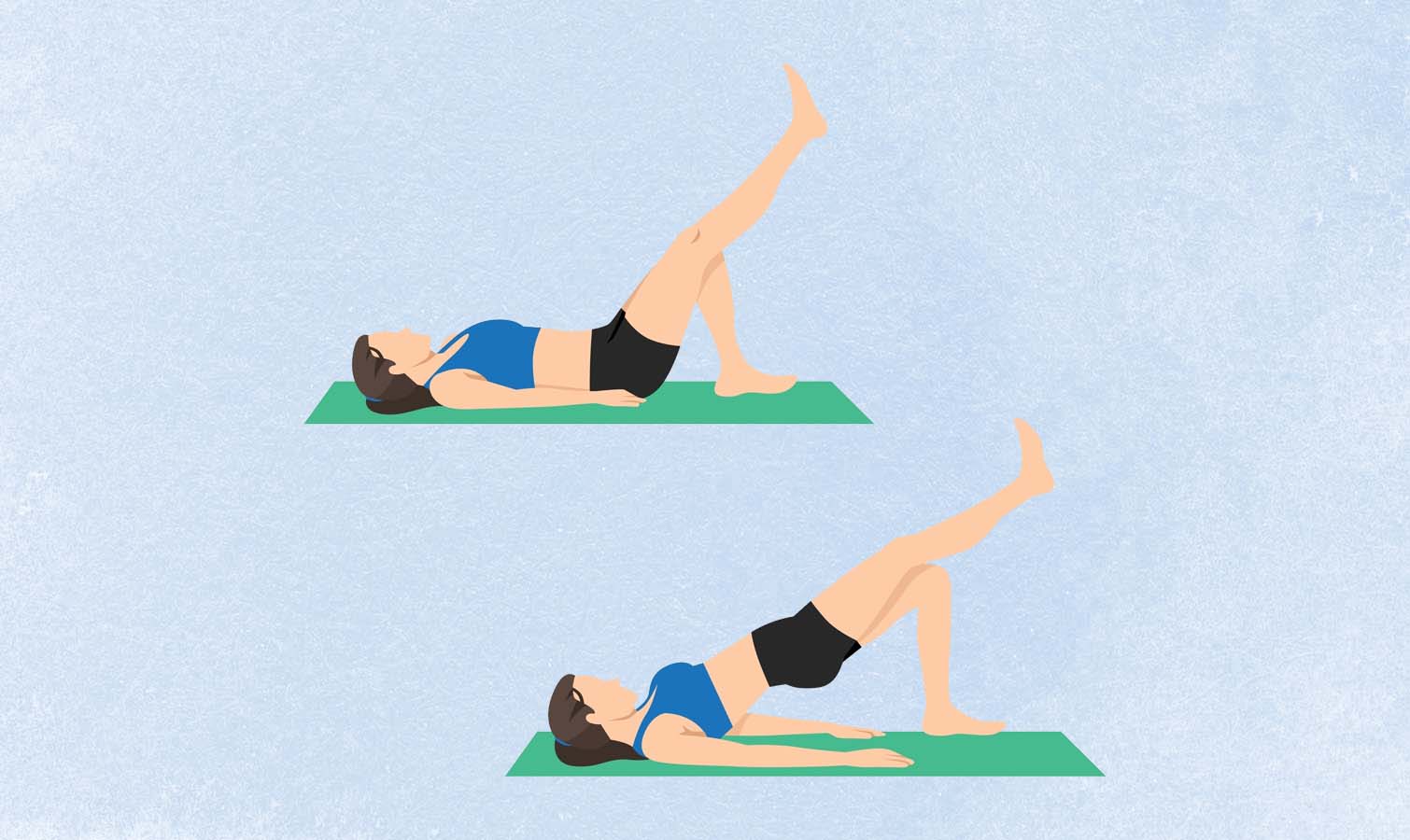
- Lie on your back with your knees bent and feet flat on the floor.
- Engage your core muscles and maintain neutral alignment of the spine.
- Extend your left leg into the air.
- Squeeze your right glute, press through your right foot, and lift both hips towards the ceiling.
- Keep your hips square — don’t allow one side to drop towards the mat.
- Hold for a few seconds.
- Lower your hips back down to the mat with control.
- Continue for the desired number of reps, then repeat on the other side.
2. Frog pumps
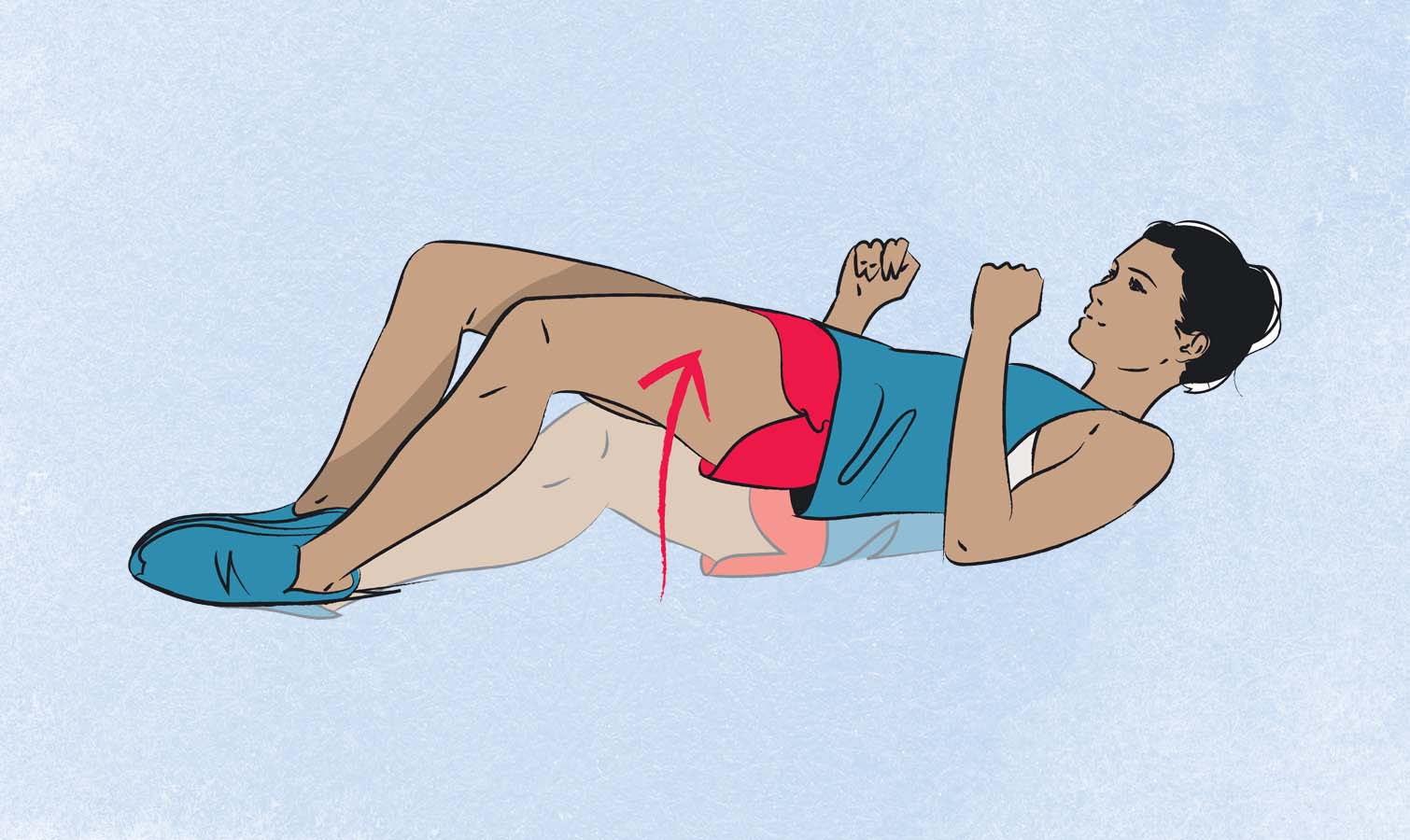
- Lie on your back with your knees bent.
- Place the soles of your feet together, allowing your knees to open outward.
- Engage your core muscles and maintain neutral alignment of the spine.
- Squeeze your glutes and lift your hips off the mat.
- Hold for a few seconds.
- Lower your hips back down to the mat with control.
- Continue for the desired number of reps.
3. Elevated glute bridges
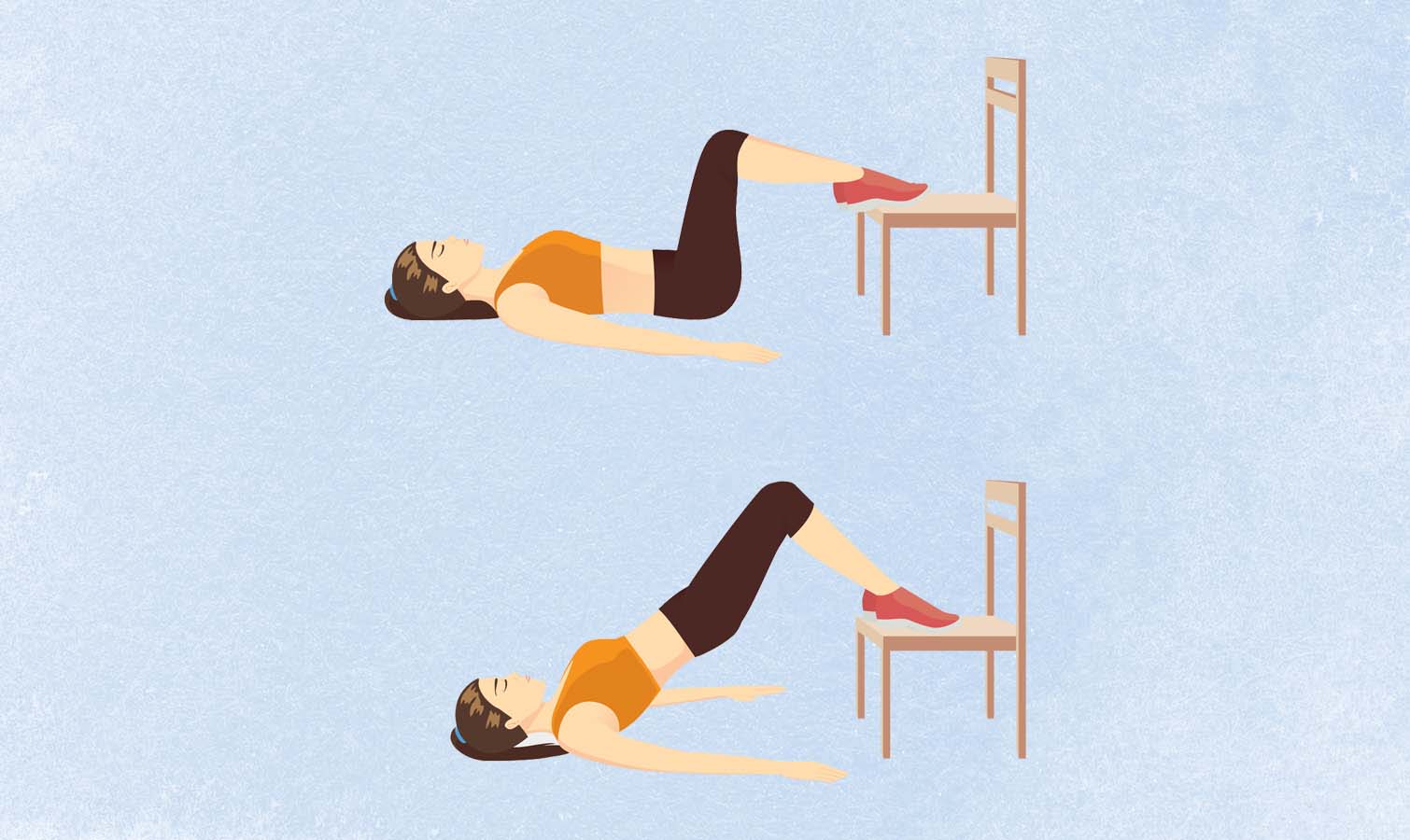
- Lie on your back with a chair or weight bench at your feet.
- Place both feet on top of the bench or chair.
- Engage your core muscles and maintain neutral alignment of your spine.
- Squeeze your glutes and lift your hips into the air.
- Hold for a few seconds.
- Lower your hips back down to the mat with control.
- Continue for the desired number of reps.
4. Tabletop bridge
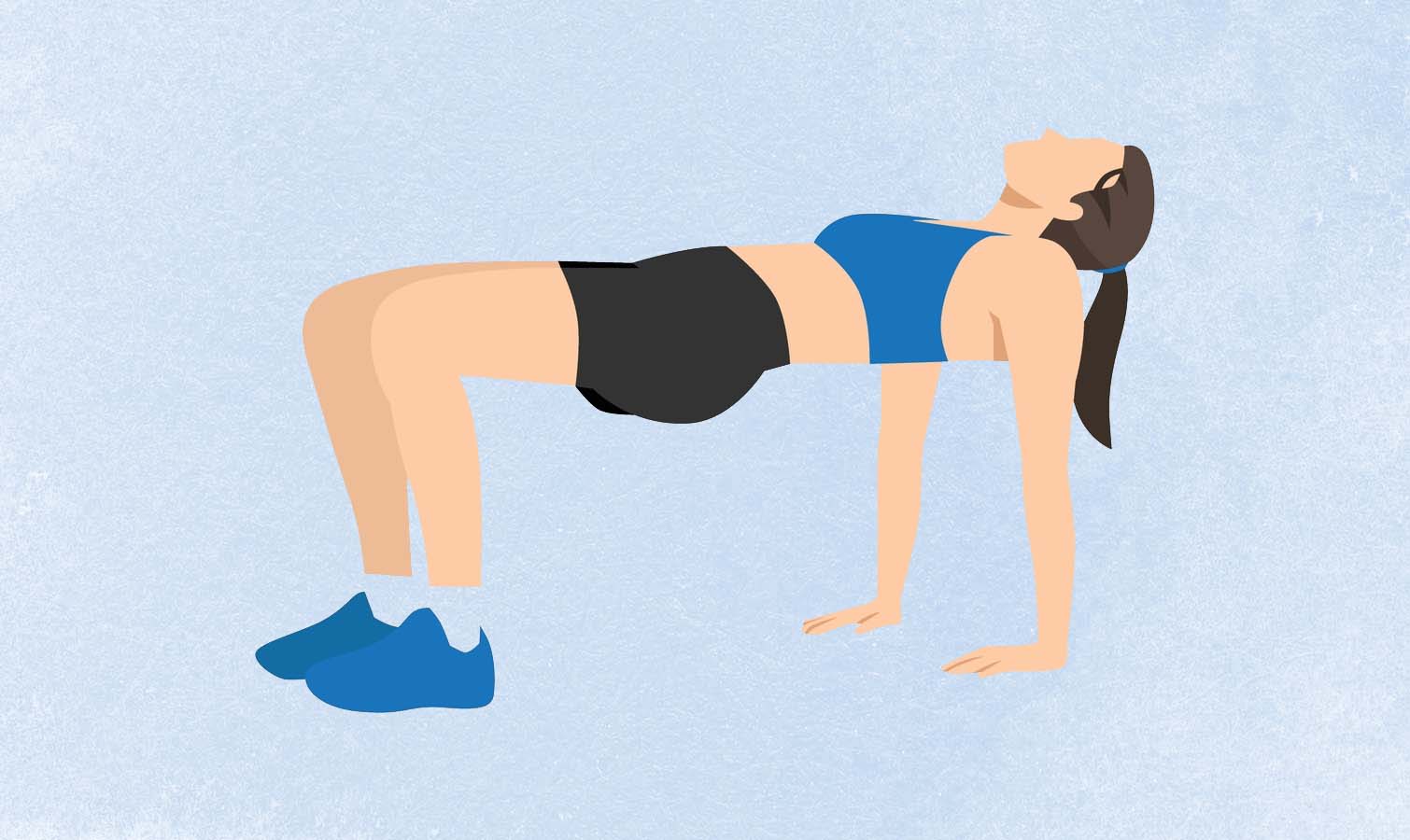
- Sit upright on the mat with your knees slightly bent.
- Place your hands on the mat, slightly behind your shoulders.
- Engage your core muscles and maintain neutral alignment of your spine.
- Squeeze your glutes and lift your hips in the air. Your torso should be parallel to the floor.
- Hold for a few seconds.
- Lower your hips back down to the mat with control.
- Continue for the desired number of reps.
What are the benefits of these glute bridge variations?
Standard glute bridges primarily target the gluteus maximus, gluteus medius, and gluteus minimus, along with your core muscles and hamstrings. These four variations work the same muscle groups but in different positions and ranges of motion, increasing functional strength and mobility.
The single-leg glute bridge will also challenge your intrinsic stabilizing muscles, improving balance, coordination, and single-leg support.
The tabletop bridge recruits your back, chest, and shoulder muscles as well, making it an excellent full-body movement.
Why are strong glutes important?
While many of us hit the gym in pursuit of a shapely backside, strengthening your glutes is vital for reasons beyond aesthetics.
Your glutes are responsible for extending your hips and stabilizing your pelvis during movement. They also help to maintain your posture, keep you upright and balanced, and are essential for activities like walking, running, and climbing. The stronger these muscles are, the more efficiently your body will move.
Strong glutes can also prevent common issues like low back pain and knee injuries.
More from Tom's Guide
- Forget barbells — you need just 1 dumbbell and 6 moves to build bigger glutes
- I'm a PT, and these 5 best glute exercises also strengthen your back
- 4 strength exercises that sculpt your glutes and build a strong core without ab exercises

Jennifer Rizzuto is a freelance writer and certified personal trainer based in Long Island, NY. She covers various fitness-related topics and reviews for Tom's Guide. She also writes sketch comedy and short films, and performs frequently as an actor, singer, and improviser. When she's not writing, working out, or performing, you'll find her trying to convince her husband to get a dog.
You must confirm your public display name before commenting
Please logout and then login again, you will then be prompted to enter your display name.
